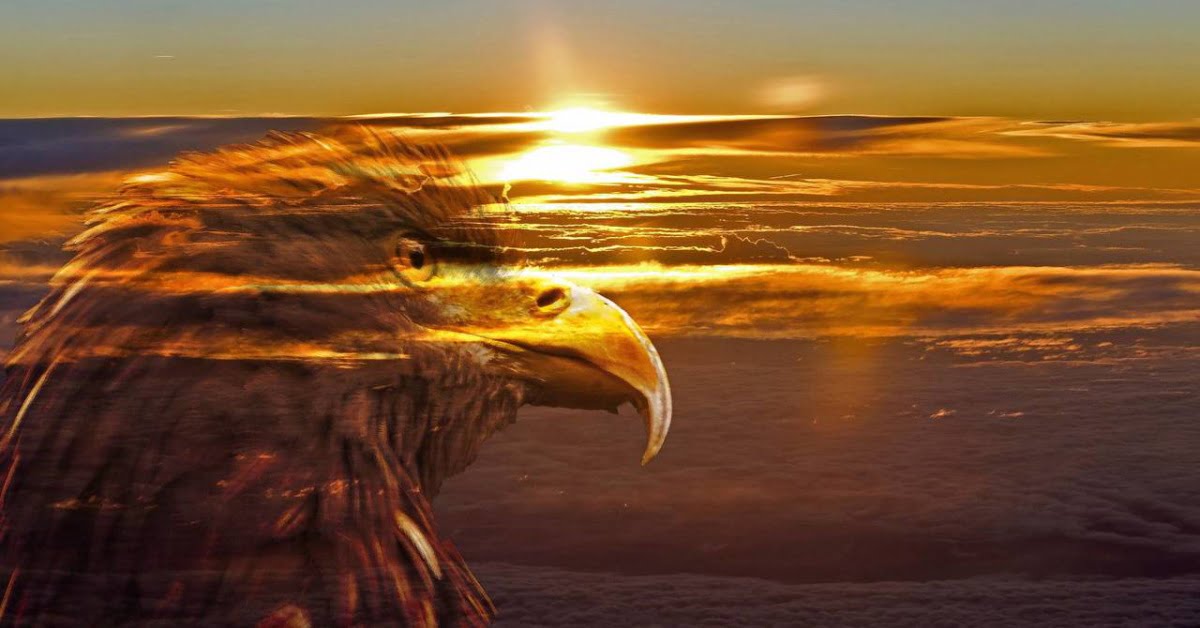Since time immemorial, it has been generally accepted that the eagle is a unique bird because it has the ability to look at the sun without hiding its gaze. We checked to what extent this idea corresponds to the truth.
This quality of a bird of prey is actively reported in ancient bestiaries. In the collection of lives of saints "Golden Legend", considered the most popular book of the late Middle Ages after the Bible, the monk Jacob of Voragin writes: “The eagle is truly the most vigilant bird that can look at the sun and not go blind...” Some modern sources add, that in the same way the eagle tests the resilience of its chicks - those of them that turn away from the sun, it throws out of the nest. From others resources, you can learn that yogis adopted this habit from eagles - they are confident that systematic practice in looking at the sun makes human vision similar to that of an eagle. Moreover, Emperor Alexander III himself, according to historians, spoke to doctors: “The eagle always looks directly at the sun, is not afraid of light, does not damage its eyes and has especially sharp vision; That’s why I don’t agree that visors and hats are harmful to soldiers, which is what I’m constantly told.”
The belief was also reflected in fiction - it was addressed Fyodor Tyutchev, Gaito Gazdanov, Marina Tsvetaeva, Dante Alighieri, William Shakespeare, Henry Rider Haggard and many other authors.
To confirm the truth of the legend, however, we need more authoritative sources. Aristotle is undoubtedly a great man, but information from Book IX of his large-scale work "Animal History" (“The sea eagle has the sharpest eyesight and forces children, when they are still without feathers, to look at the sun, and hits and turns those who don’t want to, and the one whose eyes begin to water first, kills him, and feeds the other.”) due to its antiquity, it is difficult to consider seriously. The same goes for Pliny the Elder.
If we turn to modern science, the following becomes clear. Of course, the eagle’s vision is unique in many characteristics and is considered the standard for good reason: this bird can see a rabbit from a distance of more than 3 km. But visual acuity is a slightly different characteristic, and as for blinking, it is not alien to eagles, like other birds. In addition to the inactive outer eyelids, which give the appearance of blinking, eagles have a nictitating membrane. When blinking, it closes the entire eye, which is especially clearly visible in slow motion:
Further, the brow ridges, located at the top of the eagles' skull, perform two functions - they protect the eye from impact and from direct sunlight. Specialists emphasize, that given the lifestyle that eagles and bald eagles, which are very similar in structure, lead (constantly staying on the tops of trees or in the air), they need such precautions. Thus, this is another coin in the treasury of the eagle’s eye’s unpreparedness for direct contact with the sun’s rays.
The fact that the ancient belief is a fiction is also said in zoological article, published in the magazine "Rainbow" in 2003. Well, and most importantly, not a single authoritative, scientific or pseudo-scientific modern source confirms such a unique property of eagles, not to mention the practice of throwing “blind” chicks out of the nest. With a high probability, ancient people simply did not have time to record the blinking of eagles produced by the nictitating membrane. From all of the above, we can conclude that the beautiful legend has remained a legend.
Most likely not true
If you find a spelling or grammatical error, please let us know by highlighting the error text and clicking Ctrl+Enter.







